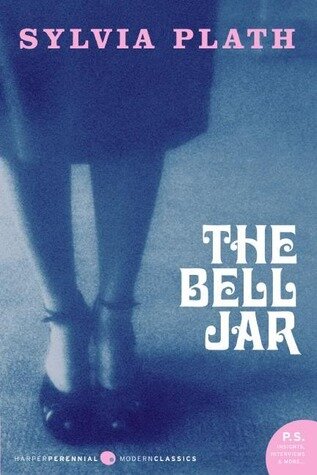The Bell Jar and White Feminism
Sylvia Plath is often lauded as one of the great American poets. Her memory lies in this fact, along with the unfortunate circumstances of her life and, ultimately, her death. Perhaps Plath’s most famous piece of work, and only novel, is The Bell Jar. Originally published in 1963 under a pseudonym, Victoria Lucas, Plath’s novel has taken its place among the ranks of great literature.
Considered autobiographical by most, The Bell Jar follows Esther Greenwood as she descends into a bout of mental illness after an internship in New York. Esther’s experiences, both at the internship and throughout the novel as she struggles with manic depressive disorder, closely parallel those of Plath’s own life. Names, however, are changed. The characterization of Esther is often seen as revolutionary for the time. Esther’s rebellion against prescribed societal norms for women, refusing marriage, and having ambitions in her career as a writer, has earned Plath praise as a feminist and subsequently The Bell Jar as a “feminist document.” Her writing throughout the novel does not shy away from the sordid details of tough subjects such as suicide, sexual assault, and severe treatments for mental illness, such as shock treatments.
Praise for her writing should not go unsung. However, while Sylvia Plath certainly is a gifted writer and poet, some of the praise directed at her novel, The Bell Jar, is more than undeserved. Often unacknowledged in this piece of literature is the overt racist attitude of Esther Greenwood as she narrates her story. Even more concerning is the lack of repercussions Esther receives for these attitudes. From the first pages, Esther utilizes several racial slurs to characterize both herself and her friends in a negative light. Esther describes Doreen, one of the white women who interns with Esther at the magazine in New York, “dusky as a bleached-blonde Negress.” Further, Esther describes her exhaustion, at one point in the book, by comparing herself to “big, smudgy-eyed Chinese woman.” These suggestions are overtly racist, and such characterizations are continued throughout the book.
Sylvia Plath
In the latter half of the book, Plath, through Esther, intentionally demonizes a black male worker at Esther’s mental hospital. Spending three pages on the characterization of this man, this part of the book seems to serve no person other than to show Esther’s torture and the internal monologue of deprecation that she projects on the man. Plath characterizes the man as having “big, rolling eyes” and “grinning and chuckling in a silly way,” subscribing to stereotypes of black men. Going even further, she phonetically spells his dialogue, using “reely” and “Miz.” She also positions him as an individual who is highly incompetent at his job. At the end of this passage, Esther kicks the man in the calf for serving her two platters of beans, suggesting that he is attempting to upset the women at the hospital. Esther receives no punishment for this action. No other nurse or worker at Esther’s hospital receives this much attention in the novel. The former server, described as “old white man,” is given a single sentence. The reason for this and the abuse exacted on the character can be attributed to the racist attitudes of Plath.
Plath utilizes many racist devices in her novel The Bell Jar. More briefly, she even suggests homosexuality is a “specific evil” when she flashes back to a scandal between two lesbians at her college. Given these facts, how could this novel be considered a feminist document? It clearly ignores and demonizes the needs and struggles of racial minorities and LGBTQ+ individuals. An overwhelming majority of prominent feminist writers, scholars, and commentators agree that feminism is not feminism without inclusivity. Roxane Gay, author of Bad Feminist, asserts this very fact, “When we talk about the needs of women, we have to consider the other identities we inhabit. We are not just women. We are people with different bodies, gender expressions, faiths, sexualities, class backgrounds, abilities, and so much more. We need to take into account these differences and how they affect us, as much as we account for what we have in common. Without this kind of inclusion, our feminism is nothing.” Scholar Kimberlé Crenshaw coined the term “intersectionality” in 1989 as a legal concept that demonstrated the marginalization of black women and the levels of discrimination they face as black people and women. This term is used now in intersectional feminism: feminism that advocates for problems facing all women, regardless of race, class, or ability. Feminism in its very definition, as prescribed by Encyclopedia Britannica, is the “belief in social, economic, and political equality of the sexes.” Clearly, this definition is inclusive; there are no boundaries or stipulations. When the word “sexes’’ is used, that means all people of all sexes.
Thus, Plath’s writing is consistent with the idea of white feminism: feminism that uplifts white women’s needs but ignores the needs of women of marginalized groups, or worse, in Plath’s case, demonizes women of marginalized groups. In alignment with the definition of feminism, white feminism, and thus The Bell Jar, cannot be defined as feminism. This is a simple reality that positions The Bell Jar, not as a feminist document but, instead, as a piece of prejudiced white feminist fiction.
Morgan McErlean has been interning at the Swarthmorean. She is a senior at Strath Haven High School.




